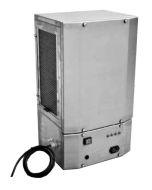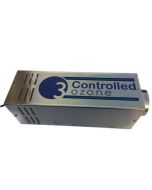What is odour?
Quite apart from being a correctly spelt odor, it is a chemical or combination of chemicals, which, when carried in air stimulates the olfactory bulb in our nose. On one end of the complexity scale, a smell or odour can comprise of a very simple chemical such as ammonia; i.e. a single chemical that is known to be odorous, whilst on the other end of the scale a cooking smell, say of curry, can actually comprise of several hundred different chemicals (some of which may be very large and complex molecules), which combined give a particular smell sensation. It is for this reason of chemical complexity and smell variety, that there is never an absolute cure for all smells.
What is an odour threshold?
It is the concentration (in parts per million ppm or mg/m3) of the single odourous chemical in the air at which half of a panel of testers (human noses) can detect the odour and half cannot. Some chemicals are incredibly odourous e.g. Trimethylamine can be smelt at concentrations as low as 0.00021 parts per million or 0.0005 mg/m3. Some other known smelly chemicals have very high odour thresholds e.g. Ammonia 46.8 parts per million or 33 mg/m3. The different odour thresholds of different chemicals is the first clue that solving odour problems is less than straight forward. Imagine an odourous chemical in the at 47 parts per million. If that chemical happens to be ammonia, it is an easy odour problem to solve. It could be said that if it is Trimethylamine, then the odour abatement challenge is over 222857 times greater!
Specific chemicals, if known to be odourous, can have an known odour threshold, however some chemicals have an odour threshold which is variable. In other words instead of being a single value xxx mg/m3, it might be expressed as a range, eg x.xx - y.yy mg/m3. The reason for this is that there may have been several attempts to identify the odour threshold, but different studies have come up with quite different results. Ozone is a well known example with an odour threshold usually between 0.0032 -2.0 ppm
What is an Odour Number?
This is a measure of the intensity of an odour. If you take an sample of the smelly air, the 'odour number' of that sample is the quantity of equal volumes of clean odour free air, that have to added to the sample to dilute it down to the odour threshold, i.e. the concentration at which half of a panel of testers can detect it. An odour number can be as low as 2 or 3 and as much as 2 million in the case of some very concentrated industrial odour sources. Odour number is often called the Threshold Odour Number (TON)
Odour Sensation
Once the odours chemicals in air reach the odour threshold, the odour becomes noticeable to most people. As odours become more concentrated in the air, our perception of them can sometimes alter so that the character of the odour seems to change. This is often because the numerous compounds in the odour increase in different degrees changing the net resultant odour. This is why some odour problems can seem to smell of one thing one day and then something different the next. The nearest likeness is with cooking and how altering the quantity of individual ingredients can alter the taste of the dish.
Although the threshold odour number can increase up an infinite scale, humans ability to detect odour intensity is actually very limited. For example, a smell from a chemical factory might have an odour threshold of 40 or 6000, however it is quite possible that those whose lives are affected by the smell are quite unaware of the change in the odours intensity, because to them the odour is exactly the same. The human nose's limited perception if odour intensity can give rise to issues in solving odour control problems. A odour abatement solution might be achieving a 99% reduction in the odour threshold number but the 'perceived' odour could be exactly the same, which raises the charge that the system does not work. Alternatively what can happen is that the efficient odour abatement system can be reduce the threshold number to a high efficiency but the result is that the odour has just changed in character.
What is EN 13725?
In short it is the new European standardised method of carrying out olfactometry and determining the concentration of odour. Where we have described above, the threshold odour number which was the normal method of quantifying odour, in recent years this has now been taken to a slightly more complex level resulting in odour being defined in terms of European odour units. This method uses n-butanol at a defined concentration to create a benchmark unit of 1 European odour unit: 1 ouE/m3. The standard details the method by which an odour sample is diluted to reach the threshold and then defined in terms of ouE/m3
Supplying 'Guaranteed' Odour Control Devices
The potentially highly complex chemistry to odours and the oddities of odour perception described above mean that it is always impossible to guarantee an odour treatment device or system, for the general removal of perceived odour. Units will be guaranteed that they work in the sense that they reduce odour threshold of known odours or compounds but not for general odour applications. This distinction can make it difficult for customers looking for a one hit absolute solution to their odour problem. Depending on the type of odour abatement enquiry that we receive, at Puravent we are careful to not make false promises about 'sorting an odour'. We think that it is much more important to explain the 'dimensions' and oddities of odours and to manage customers expectations on solutions.
What's the secret of odour busting?
There is no secret but there is a lot of know how and capable technology that when correctly applied can be very effective.
In industrial applications, the smell is more often that not, caused by known chemicals that are part of the industrial process. For this reason it is much easier to specify a solution that is ideal for that particular smell. Smells from other sources, e.g. within the home, cars, offices, bars, and restaurants are less specific, therefore the solutions that is used tend to be unspecific, and therefore general deodourisers tend to be used, which are known to be effective across a wide spectrum of different smells. Controlling smells is either achieved by pulling all the air through an air cleaner that has carbon filters so that the smell is physically removed by filtering at a faster rate than it is being produced, or, by applying a substance to the air.
What is an odour mask?
An odour mask is a substance that is generally a pleasant smell that is used to disguise a unpleasant one. The substance is generally sprayed into the air or evaporated from a wick. These perfumes can be effective, but they have a couple of problems. Firstly the masking fragrance can over time become as undesirable as the smell being masked. There have been instances of water companies using masking agents to disguise the smell of sewage works, only to discover that complaints about the smell of sewage get replaced by complaints about the smell of roses. The second problem is that in a enclosed space i.e. a room or building the masking agent can potentially cause discomfort to people with chemical allergies.
What is Odour Nuisance Radius?
Where a odour nuisance is external, in other words, a nuisance to neighbours living near a odour producing site (e.g. factory, fast food outlet, sewage works) then it is possible, in some cases to work out the the distance from the source of the odour to the point at which the odour is at its' detection threshold. This theoretical distance is called the odour nuisance radius. It is no more than a tool that designers of odour control systems use in order to determine how efficient a system needs to be so that it is not a nuisance to neighbours.
The model does not take account of climatic conditions such as wind, humidity and temperature, which all have a part to play on odour spread and delectability. There are a number of assumptions and factors that are used in this model - that the open sources of odour are covered and ventilated to a central discharge point from which the airflow is known, that the odour threshold is known and that the threshold odour number (TON) is known. Sometimes the composition of the odour is well understood and the most odourous compound, (for which the threshold is known) within the composition is taken as the marker and from which the calculation is done.



